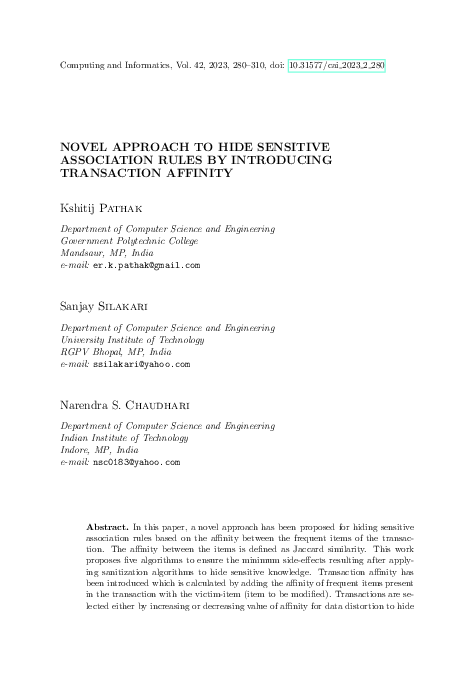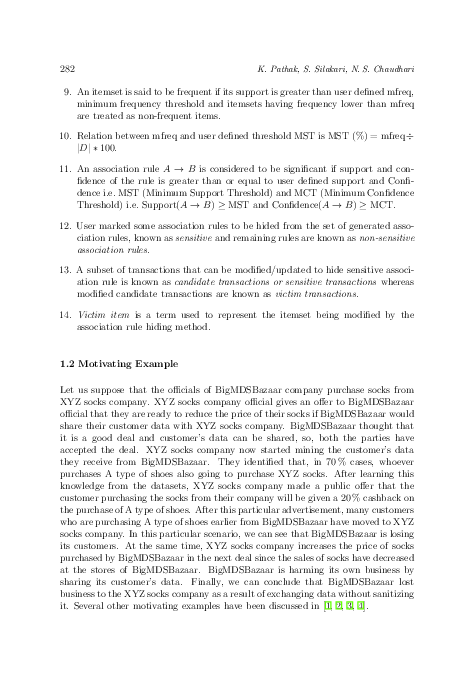Novel Approach to Hide Sensitive Association Rules by Introducing Transaction Affinity
keywords: Association rule hiding, transaction affinity, affinity, AffinityDSR, AffinityDSL
In this paper, a novel approach has been proposed for hiding sensitive association rules based on the affinity between the frequent items of the transaction. The affinity between the items is defined as Jaccard similarity. This work proposes five algorithms to ensure the minimum side-effects resulting after applying sanitization algorithms to hide sensitive knowledge. Transaction affinity has been introduced which is calculated by adding the affinity of frequent items present in the transaction with the victim-item (item to be modified). Transactions are selected either by increasing or decreasing value of affinity for data distortion to hide association rules. The first two algorithms, MaxaffinityDSR and MinaffinityDSR, hide the sensitive information by selecting the victim item as the right-hand side of the sensitive association rule. The next two algorithms, MaxaffinityDSL and MinaffinityDSL, select the victim item from the left-hand side of the rule whereas the Hybrid approach picks the victim item from either the left-hand side or right-hand side. The performance of proposed algorithms has been evaluated by comparison with state-of-art methods (Algo 1.a and Algo 1.b), MinFIA, MaxFIA and Naive algorithms. The experiments were performed using the dataset generated from IBM synthetic data generator, and implementation has been performed in R language.
mathematics subject classification 2000: 68T05, 68T30
reference: Vol. 42, 2023, No. 2, pp. 280–310


